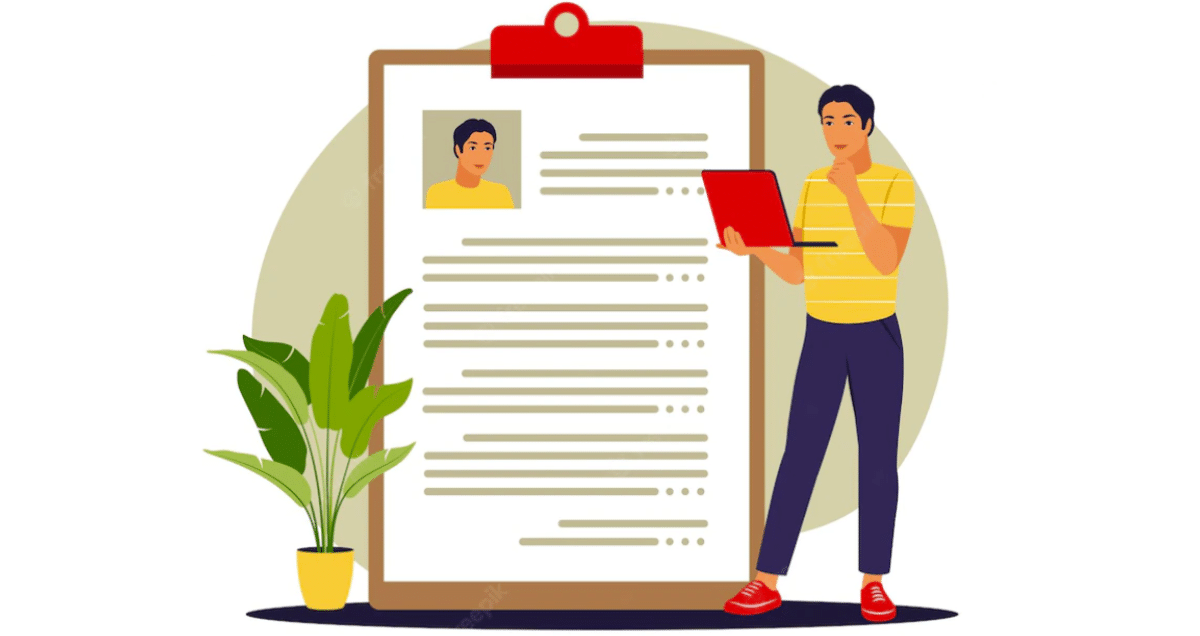How to Deal with Mental Harassment at the Workplace?
Creating a safe and supportive work environment cannot be overstated in today’s fast-paced professional world. As employees, we dedicate a significant portion of our lives to our careers, and it is essential that we feel respected, valued, and protected within our workplace. Mental harassment can creep into our professional lives, wreaking havoc on our well-being […] The post How to Deal with Mental Harassment at the Workplace? appeared first on Chegg India.

Creating a safe and supportive work environment cannot be overstated in today’s fast-paced professional world. As employees, we dedicate a significant portion of our lives to our careers, and it is essential that we feel respected, valued, and protected within our workplace.
Mental harassment can creep into our professional lives, wreaking havoc on our well-being and hindering our ability to thrive. As per a global survey conducted by International Labour Organization, 3 out of 5 victims faced harassment at work multiple times.
Therefore, we must arm ourselves with knowledge and strategies to combat and eradicate mental harassment at the workplace effectively, empowering ourselves and others to take a stand for a healthier and more inclusive work environment.
This article aims to provide valuable insights and practical strategies to tackle mental harassment in the workplace and empower individuals to take the necessary actions.
Understanding Mental Harassment
Mental harassment is any behavior that causes discomfort or suffering. It encompasses various actions, such as verbal abuse, humiliation, intimidation, threats, isolation, and manipulation. These activities can lead to a hostile work environment, impacting the victim’s self-esteem, mental health, and job performance.
Different Types of Mental Harassment
1 Verbal Abuse
We define verbal abuse as using abusive words, slurs, or insulting statements to denigrate or humiliate another person. It can happen in one-on-one interactions or in front of others, causing embarrassment and emotional distress.
Examples of verbal abuse include:
- Constantly criticizing someone’s work, appearance, or personal life.
- Using offensive language or derogatory terms to refer to an individual.
- Mocking or ridiculing someone’s ideas or contributions during meetings.
2 Intimidation
Intimidation is behavior that creates fear or distress by using aggressive body language, shouting, or threatening. It is often used to assert dominance or control over others. Here are some examples of workplace intimidation:
- Raising one’s voice threateningly to intimidate a coworker.
- Making physical gestures or invading personal space to create fear.
- Threatening someone’s job security or career advancement if they do not comply with certain demands.
3 Bullying
Bullying involves persistent and repetitive negative behavior aimed at harming an individual emotionally, socially, or professionally. It can emerge in various ways, with negative consequences for the victim’s well-being. Examples of workplace bullying include:
- ding rumors or gossip about a coworker to tarnish their reputation.
- Excluding someone from team activities or important meetings to isolate them.
- Undermining someone’s work by taking credit for their ideas or sabotaging their projects.
4 Discrimination
Discrimination is the unfair or disparate treatment of persons based on gender, race, religion, or other protected characteristics. It can create a hostile work environment and lead to feelings of marginalization and distress. Examples of workplace discrimination include:
- Denying someone a promotion or pay raise based on gender or ethnicity.
- Making offensive comments or jokes about someone’s religious beliefs or cultural background.
- Assigning undesirable tasks or limiting opportunities based on discriminatory biases.
5. Cyberbullying
Cyberbullying has become a common type of mental abuse as technology has advanced. It entails harassing, threatening, or intimidating individuals via Internet channels. Examples of workplace cyberbullying include:
- Sending malicious or derogatory emails or messages to a coworker.
- Posting defamatory content or spreading false rumors about someone on social media.
- Sharing inappropriate images or engaging in online harassment through anonymous accounts.
It is important to know that these examples are not the only ones, and mental harassment can take various forms depending on the specific circumstances and individuals involved. Recognizing the signs of mental harassment is crucial to address and prevent such behavior in the workplace.

The Impact of Mental Harassment
Mental harassment has severe consequences for the victims. It can lead to anxiety, depression, fear, and emotional instability. Victims may experience declining job satisfaction, reduced productivity, and motivation. It has also been observed that mental harassment of women in the workplace is more common.
Prolonged exposure to mental harassment can result in physical health problems, including headaches, insomnia, and high blood pressure. Furthermore, it can hinder career growth, as victims may face difficulties focusing on their work, pursuing opportunities, or building professional relationships.
Resources for Dealing with Mental Harassment at the Workplace
Experiencing mental harassment in the workplace can be emotionally challenging and psychologically distressing. Individuals who find themselves in such situations must know how to deal with mental harassment at the workplace, seek support, and utilize available resources to navigate these difficult circumstances. Here are some support options and resources that can provide assistance and guidance.
1 Employee Assistance Programs (EAP)
Many companies offer Employee Assistance Programs to support their employees’ mental well-being. EAPs typically provide confidential counseling services, referrals to mental health professionals, and resources to help individuals cope with workplace issues, including mental harassment.
2 Counseling Services
Professional counseling services can play a vital role in helping individuals cope with the emotional impact of mental harassment. Licensed therapists or counselors trained in workplace issues can provide a safe and supportive environment to discuss experiences, process emotions, and develop effective coping strategies.
3 Legal Helplines and Advocacy Organizations
Several organizations and helplines specialize in providing legal advice and support to individuals facing workplace harassment, including mental harassment. These resources can help individuals understand their legal rights, offer guidance on filing complaints, and provide information about relevant laws against workplace harassment and regulations. Organizations like the National Commission for Women (NCW) and local labor authorities can assist in India.
4 Support Groups and Peer Networks
Joining support groups or connecting with others who have experienced similar workplace challenges can provide a sense of validation, solidarity, and many connections may be facilitated online. Online forums, social media groups, or local community connections.
5 Human Resources Department
Employees facing mental harassment should consider reaching out to their organization’s human resources (HR) department. HR professionals are trained to handle workplace issues, including complaints of harassment. They can provide guidance on the company’s policies and procedures, initiate internal investigations, and take appropriate actions to address the situation.
6 Reporting Platforms and Whistleblower Protection
Some workplaces have established reporting platforms or whistleblower mechanisms to address concerns related to harassment. These platforms allow individuals to report incidents anonymously and ensure confidentiality.
By accessing these support options, individuals can find the guidance, validation, and assistance they need to cope with the impact of mental harassment and take appropriate actions to address the issue in their workplace.
Laws and Regulations to Prevent Mental Harassment:
To address mental harassment effectively, being aware of the laws and regulations is crucial. In India, several laws protect individuals from workplace harassment, including:
- Sexual Harassment at Workplace Act (2013): This act mandates the establishment of internal complaint committees, defines sexual harassment, and outlines the procedure for filing complaints. It provides a legal framework to address and prevent sexual harassment in the workplace.
- Indian Penal Code (IPC) Section 509: IPC Section 509 covers offenses related to words, gestures, or acts intended to insult the modesty of a woman, including mental harassment. It allows individuals to seek legal remedies in case of harassment.
- Information Technology Act (2000): The IT Act addresses online harassment, cyberbullying, and electronic communication offenses that can cause mental harassment. It provides provisions to deal with cybercrime and safeguard individuals from online harassment.
Where and How to Complain Against Mental Harassment
If you experience mental harassment at the workplace, taking appropriate steps to address the issue is crucial. Here are some important actions to consider:
- Document Incidents: Maintain a detailed record of incidents, including dates, times, locations, and a description of the harassment. This documentation will provide crucial evidence and support your case if you file a complaint.
- Internal Complaint Mechanism: Many organizations have internal complaint mechanisms or grievance cells to address workplace harassment. Consult your employee handbook or HR department to understand the process and file a formal complaint.
- Seek Support: Contact trusted colleagues, friends, or mentors for support and guidance. Discussing the issue with someone can provide emotional support and help you gather different perspectives.
- Legal Consultation: If internal mechanisms fail to provide a satisfactory resolution, consider seeking legal advice from an employment law specialist. They can guide you on your rights, legal options, and the steps to take for a formal complaint or legal action.
- External Authorities: In severe cases, or when internal mechanisms are ineffective, you may need to involve external authorities. This can include reporting the harassment to local labor offices, human rights commissions, or the police, depending on the nature of the harassment.
How to Promote a Supportive Work Culture:
Promoting a supportive work culture is crucial for preventing and addressing mental harassment in the workplace. To achieve this, organizations should establish clear policies against harassment and provide regular training sessions to educate employees about their rights and responsibilities.
Empowering bystanders through training and guidelines enables them to intervene and support victims. Regular communication, feedback, and involving employees in shaping policies create a supportive work culture. Providing employee support programs, such as counseling services and wellness initiatives, emphasizes the importance of mental health.
Lastly, leading by example, holding leaders accountable, and promptly addressing reported incidents set the standard for all employees. By implementing these strategies, organizations can create a supportive work culture prioritizing their employees’ well-being and mental health, fostering a healthier and more productive workplace.
Importance of Addressing Mental Health
Addressing mental harassment in the workplace is essential. By recognizing the signs, understanding the impact, and taking appropriate actions, we can foster a culture that values all employees’ respect, dignity, and well-being. Remember, no one should endure mental harassment; everyone deserves to work in a safe and supportive workplace.
Let’s remember; we have the power to shape the future of our work environments. By addressing mental harassment head-on, we not only improve the lives of individuals today but also lay the foundation for a more equitable and harmonious workplace for generations to come.
Evaluate numerous career choices to choose the right career path for yourself. Dive in to our guide on Career Advice.
Frequently Asked Questions(FAQs)
Mental harassment in the workplace refers to unpleasant behavior that targets an individual’s mental well-being, causing distress or harm. It includes actions like verbal abuse, humiliation, intimidation, threats, isolation, and manipulation.
Proving mental harassment typically requires evidence such as documentation of incidents, witness statements, and supporting records like emails or messages. It’s essential to provide a clear pattern of consistent and unwelcome behavior that detrimental impacts the victim’s mental well-being.
IPC Section 509 covers offenses related to words, gestures, or acts intended to insult the modesty of a woman, including mental harassment. However, mental harassment by an employer may be addressed under other relevant sections, such as workplace harassment laws or specific employment regulations.
Yes, it is possible to file a case for mental harassment at the workplace. Individuals experiencing mental harassment can seek legal recourse by filing a complaint with relevant authorities, such as internal grievance committees, human resources, or labor offices. It is advisable to consult with legal professionals to understand the specific procedures and laws applicable to your situation.
Other Related Reads
The post How to Deal with Mental Harassment at the Workplace? appeared first on Chegg India.



























